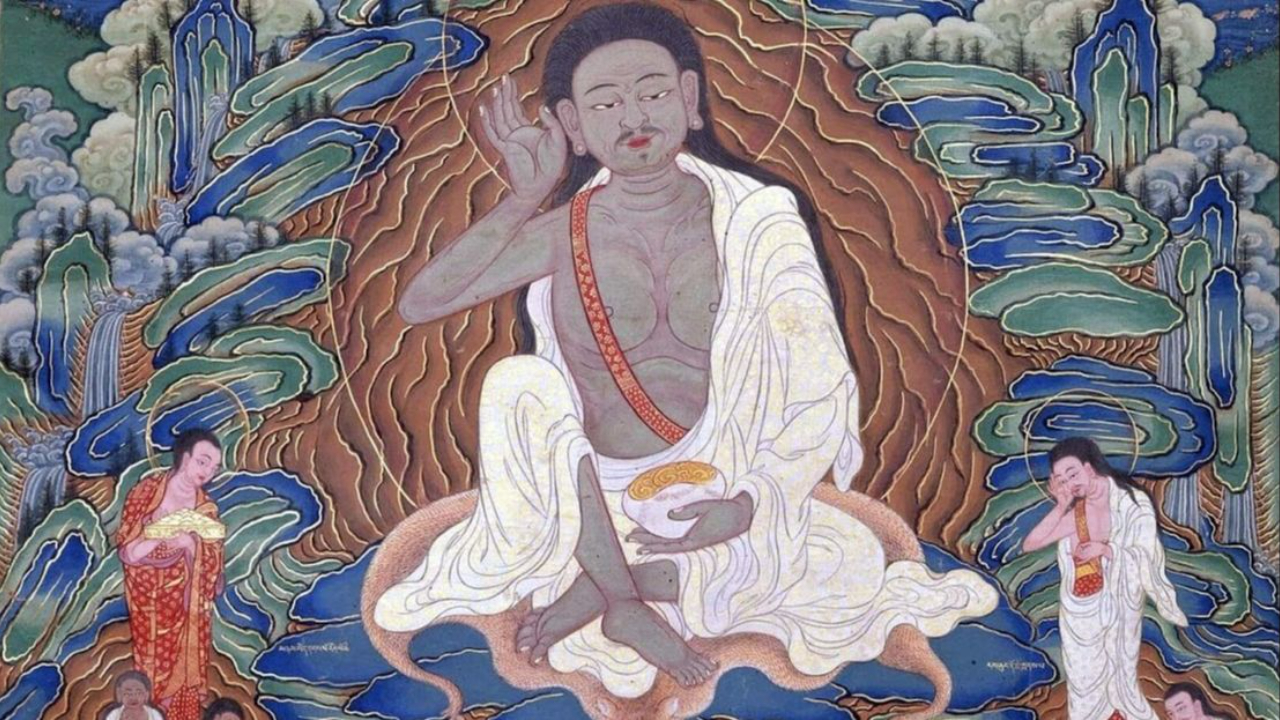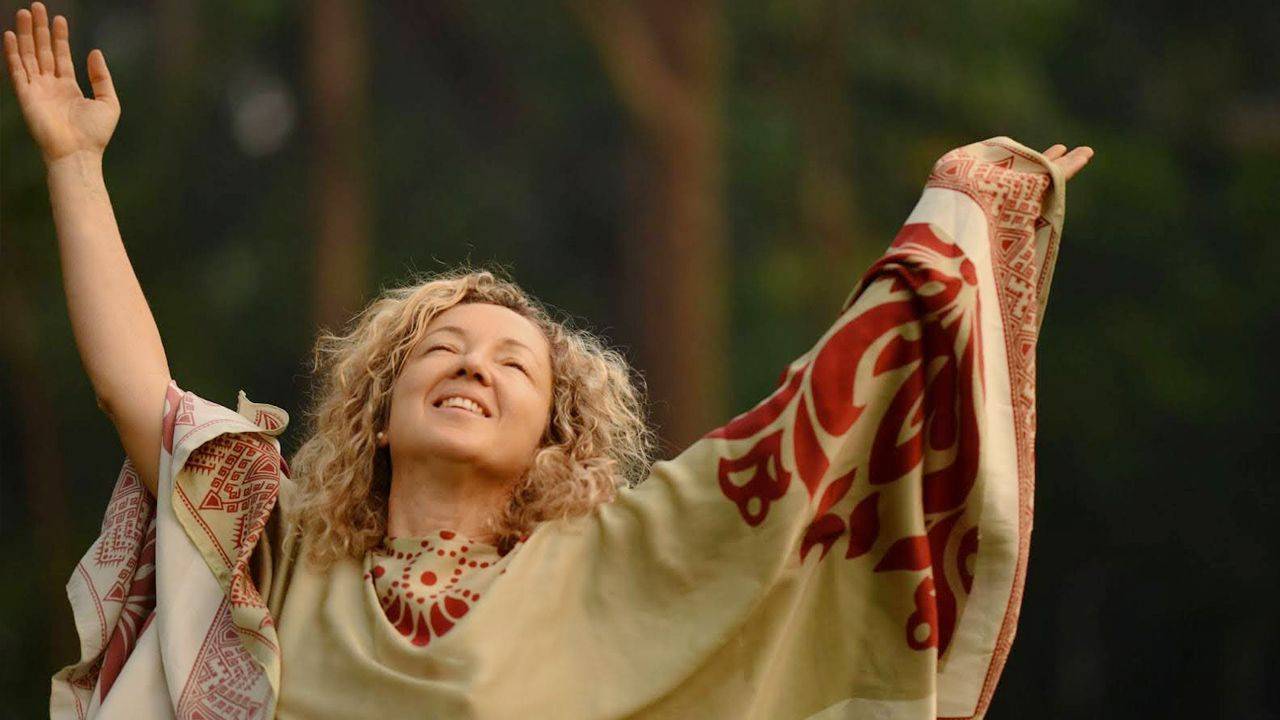Understanding Kali Maa: The Powerful Hindu Goddess
Aug 30, 2024
Kali Maa is the embodiment of time, change, and the raw power of the universe. Unlike the more serene deities, Kali is fierce, unapologetic, and complex, she’s the mother who nurtures, but also the warrior who destroys. To her devotees, Kali is the ultimate symbol of transformation.
Kali is the feminine form of Kala, encapsulating concepts of time and duality, such as good and evil. She tears down the old, destroys the ego, and makes way for the new. Yet, beneath her terrifying appearance lies a heart brimming with love and compassion, ready to embrace those who surrender to her divine will.
Worshipped for centuries, particularly in South Asia, Kali represents the cyclical nature of existence, birth, life, death, and rebirth. She’s the force that governs these cycles, reminding us that to create, we must first destroy.
But this destruction is not to be feared; it’s a necessary step toward spiritual enlightenment. Kali’s fierce image challenges us to face our inner demons and to embrace the chaos within as a path to inner peace. In understanding Kali, we unlock the secrets of the universe, finding balance in the interplay of creation and destruction, love and fear, light and dark.
Kali's Origins and History of Kali Maa
Kali Maa’s origins are steeped in ancient Hindu mythology, where she first appears as a fierce aspect of the goddess Durga. Kali's origins can be traced to her emergence from the combined wrath and energy of various gods during intense battles against demons. According to the sacred text, the Devi Mahatmyam, Kali was born in a moment of intense crisis.
The world was threatened by the demons Madhu and Kaitabha, who symbolized the forces of chaos and ignorance. In response to this threat, Durga, the great warrior goddess, summoned forth Kali from her own brow, a gesture that symbolizes the unleashing of pure, unbridled power.
Kali didn’t hesitate. With her terrifying form, she leaped into battle, destroying the demons with ease. But Kali’s role extends beyond just vanquishing external enemies. She is also the destroyer of the inner demons that plague the human mind, fear, ego, and attachment.
As the first of the ten Mahavidyas, or wisdom goddesses, in the tantric tradition, Kali holds a unique place in Hindu spirituality. Her worship is particularly prominent in regions like Bengal, Assam, South India, and Nepal, where she is revered as a powerful protector and a guide to spiritual liberation.
Symbolism and Iconography of Goddess Kali

Kali’s iconography is designed to provoke a deep response in those who gaze upon her. She is typically depicted as a dark-skinned goddess with four or ten arms, each holding a weapon or the severed head of a demon, symbolizing her ability to cut through the darkness of ignorance.
Her skin is black or blue, representing the infinite nature of the universe and the dark void from which all creation springs. Her red eyes glow with the intensity of her passion, and her tongue lolls out, a symbol of her insatiable hunger for truth and her power to devour evil.
Perhaps the most startling aspect of Kali’s appearance is her garland of human heads and her skirt made of severed arms. These gruesome adornments represent the dissolution of the ego and the surrender of the individual self to the divine. Each head in her garland symbolizes a conquered vice, while the severed arms are a reminder that physical actions alone cannot lead to spiritual enlightenment.
Kali’s tongue, often depicted dripping with blood, is a potent symbol of her power to consume ignorance and to challenge the established order. Her appearance is meant to disrupt our complacency, forcing us to confront the realities of life and death, and to move beyond the superficialities of existence.
Despite her fearsome appearance, for those who fully surrender to her, Kali reveals her true form—a radiant and loving mother, full of boundless energy and infinite grace. In this state, she becomes the gateway to higher consciousness, guiding her devotees through the darkness and into the light of spiritual awakening.
Forms and Manifestations of Maa Kali
Kali Maa is a goddess with many faces, each one as powerful and awe-inspiring as the next. Kali appears to a notable 17th-century Bengali Tantra thinker in a dream, marking the beginning of the worship of the Dakshinakali form.
The two most well-known forms of Kali are the popular four-armed version and the ten-armed Mahakali avatar. In her four-armed form, Kali is often depicted standing on the chest of her consort, Lord Shiva, symbolizing the balance of cosmic forces. This form is the one most commonly seen in temples and is beloved by her devotees for its blend of ferocity and grace.
But Kali’s power doesn’t stop there. In her Mahakali avatar, she takes on a more intense form, with ten arms, each holding a weapon or a symbol of divine power. This form of Kali represents the boundless energy of the universe and her ability to control all aspects of existence—creation, preservation, and destruction. Mahakali is the ultimate force of nature, reminding us that in the grand cycle of life, everything must eventually return to its source.
Kali is also known by other names and forms, including Samhara Kali, the goddess of death and destruction. This form is particularly revered by those who seek to overcome their fears and transcend the limitations of the material world. According to various traditions, Kali is said to have 8, 12, or even 21 different forms, each one showcasing a unique aspect of her divine nature.
Worship and Festivals Associated with Kali Maa

Two of the most significant festivals dedicated to Kali are Navaratri and Durga Puja. These celebrations are not just religious events but cultural phenomena that draw millions of devotees and tourists alike.
Navaratri, celebrated across North, South, and West India, is a nine-night festival that begins on the new moon day of the Hindu month of Ashvin. Each night is filled with prayers, fasting, and vibrant dance performances, all dedicated to different forms of the goddess. The festival culminates on the tenth day, known as Dussehra, which marks the victory of good over evil. For devotees of Kali, Navaratri is a time to connect with the goddess’s energy, seek her blessings, and celebrate the triumph of light over darkness.
In Eastern India, particularly in Bengal, the celebration of Durga Puja takes on a grand scale. This festival begins with Mahalaya, the day after the completion of Pitr Paksh, a 16-day period dedicated to honoring ancestors. Durga Puja is a 10-day celebration that honors the goddess Durga, of whom Kali is a fierce manifestation. During this time, beautifully crafted idols of the goddess are worshipped in elaborately decorated pandals (temporary structures), and the air is filled with the sound of drums, hymns, and the scent of incense. The festival ends with the immersion of the idols in rivers, symbolizing the return of the goddess to her celestial abode.
Within the Hindu pantheon, Kali is also worshipped in temples throughout India, particularly in the Shakti Pithas, which are considered the most sacred shrines dedicated to the goddess. These temples draw devotees from all walks of life, each seeking the divine mother’s protection, wisdom, and grace.
Empowerment through Kali Maa

Kali Maa is much more than a symbol of destruction; she is the ultimate embodiment of feminine power and empowerment. Throughout history, her story has inspired women to rise above societal limitations and take control of their destinies. Kali’s fearless nature and her ability to confront and overcome obstacles resonate with those seeking to find their inner strength and voice.
In the spiritual context, Kali represents the journey of self-realization and spiritual growth. Her power to destroy the ego and bring forth the true self is a metaphor for the inner battles we all face. By worshipping Kali, devotees seek to transcend their limitations and achieve a higher state of consciousness. Encountering Kali in various forms leads to profound spiritual transformations.
One of the most powerful stories of devotion to Kali comes from Ramakrishna Paramahansa, a great enlightened mystic of the 19th century. Ramakrishna’s life was a testament to the transformative power of Kali. As a priest at a Kali temple, he would often enter deep states of devotion, longing to see the goddess in her true form.
In a moment of profound despair, he threatened to take his own life if Kali did not reveal herself to him. In that intense moment, Kali manifested before him, filling him with an indescribable ecstasy and divine bliss. This encounter with Kali transformed Ramakrishna’s life, and he spent the rest of his days in a state of spiritual exaltation, teaching others the path of devotion to the goddess.
The Significance of Kali Maa in Hinduism

Often depicted as a fierce and terrifying figure, Kali’s significance lies in her role as both a destroyer and a protector. As a mother goddess, she embodies a powerful and complex divine figure in Hinduism, representing both nurturing and destructive forces essential for spiritual evolution.
In Hindu iconography, Kali is often shown standing on the body of Lord Shiva, symbolizing the balance between creation and destruction. Her image is meant to challenge and provoke, forcing us to confront our fears and attachments. Yet, despite her fearsome appearance, Kali is also a loving mother who protects her devotees from harm and guides them toward enlightenment.
Kali Mantras and Their Significance

Kali Maa’s mantras are potent tools for invoking her energy and gaining her blessings. Kali kills the forces of evil, ignorance, and egoism, serving as a fierce protector and a reminder of death's inevitability while also representing fertility and renewal. These sacred chants are designed to resonate with the vibrations of the universe, connecting the devotee with the goddess’s powerful presence. Chanting Kali mantras is believed to bring protection, empowerment, and spiritual growth, making them an integral part of Kali worship.
1. One of the most well-known mantras is the Kali Beej Mantra, “Om Krim Kali.” This mantra is a seed syllable (Beej) that encapsulates the essence of Kali’s power. Chanting this mantra is said to protect the devotee from evil forces and bring about inner transformation. It is particularly effective in dispelling fear and instilling confidence.
2. Another powerful chant is the Kali Mantra, “Om Kring Kalikaye Namah.” This mantra is a direct invocation of Kali’s energy, calling upon her to guide the devotee toward purity of consciousness and clarity of thought. The Kali Mantra is known for its ability to bring emotional healing and wisdom to those who chant it with devotion.
3. For those seeking even deeper transformation, the Maha Kali Mantra, “Om Sri Maha Kalikayai Namah,” offers a path to unparalleled strength and courage. This mantra is associated with the great form of Kali, known as Mahakali, who embodies the full spectrum of her divine power. Chanting this mantra regularly is believed to surround the devotee with positive vibrations and protect them from adversity.
4. The Kalika-Yei Mantra, “Om Klim Kalika-Yei Namaha,” is particularly beneficial for overcoming complex challenges. It is often recited by students and professionals who are under stress, as it helps to clear obstacles and bring about success.
5. Finally, the Kali Gayatri Mantra, “Om Maha Kalyai Cha Vidmahe Smasana Vasinyai Cha Dhimahi Tanno Kali Prachodayat,” is a powerful invocation that connects the devotee with Kali’s divine consciousness. This mantra is used to achieve success and well-being, and it is especially effective in removing fears and bringing about spiritual clarity.
When chanting these mantras, it is recommended to do so after sunset, facing either east or north. Devotees often observe a period of 40 days, chanting the mantras 108 times daily to fully absorb their benefits. By following these practices, you can experience the profound transformation that comes from invoking the divine power of Kali Maa.
Recommended Read: Kali’s Odiya – A Shaman’s True Story of Initiation

For those intrigued by the power and mystique of Kali Maa, there is a highly recommended book that offers a deep and personal exploration of this profound goddess. The Linga Purana describes a narrative where Shiva instructs Parvati to defeat an asura named Daruka, illustrating how Kali emerges from Parvati's union with Shiva. “Kali’s Odiya: A Shaman’s True Story of Initiation” by Amarananda Bhairavan is a compelling account that delves into the spiritual journey of the author as he experiences a powerful initiation under the guidance of Kali.
Conclusion
Kali Ma embodies both creation and destruction, representing the dynamic forces of time, change, and the eternal cycle of life and death. Her presence is a powerful reminder of the transformative power that lies within destruction. Through her myriad forms and symbols, Kali challenges us to confront our fears, embrace change, and transcend the limitations of the ego.
Her story is not just one of destruction but of rebirth, showing us that through surrender, we can discover our true selves and unlock the boundless potential of the divine. In honoring Kali Maa, we honor the eternal dance of creation and destruction that sustains the universe and our own journey of self-discovery.















